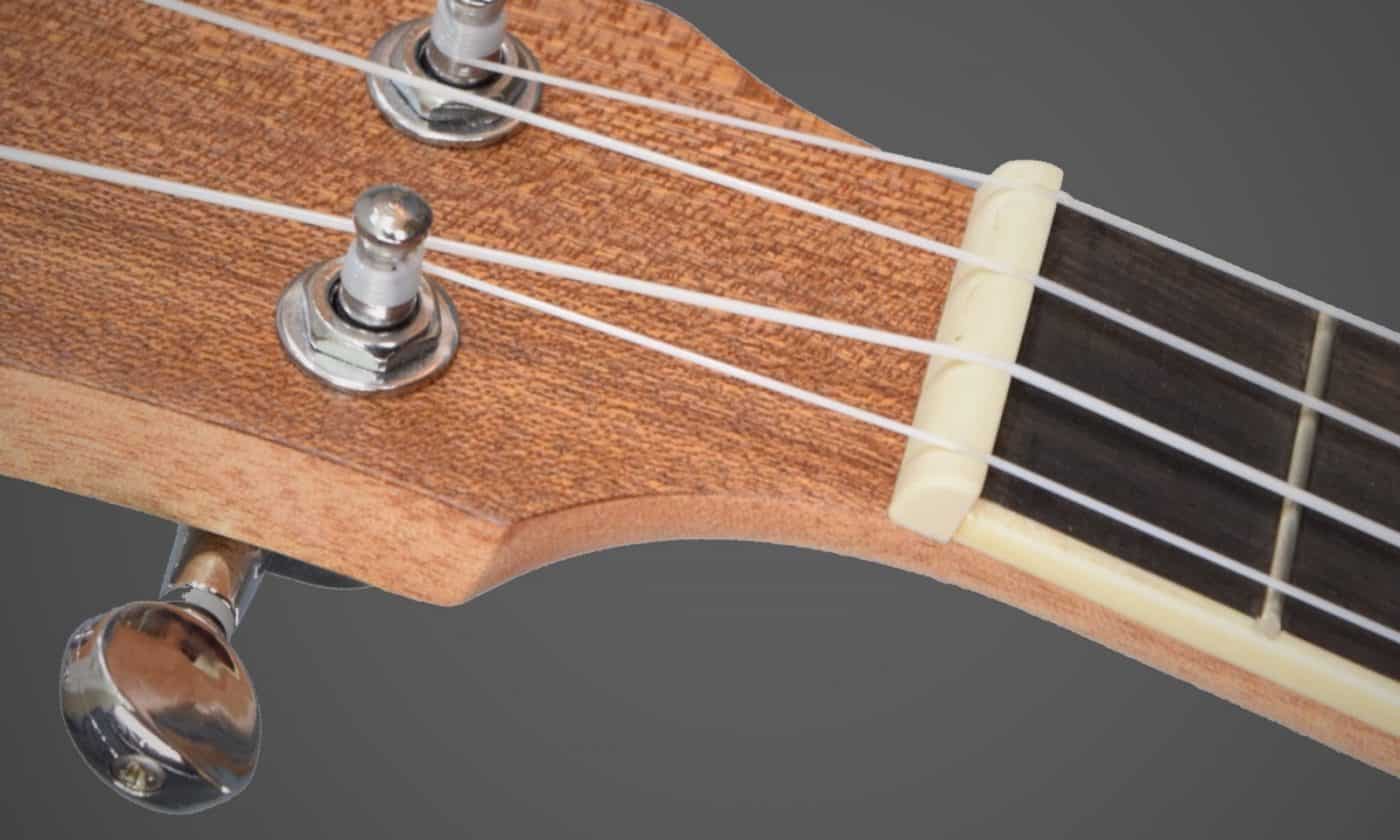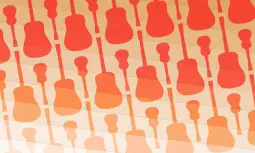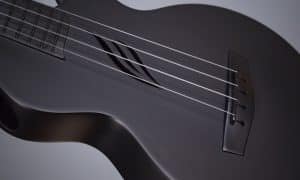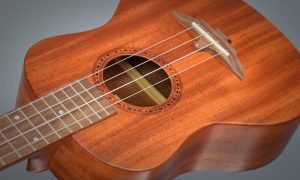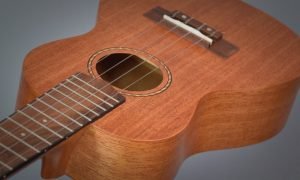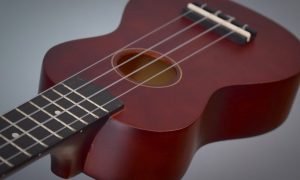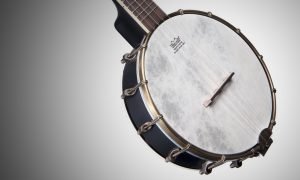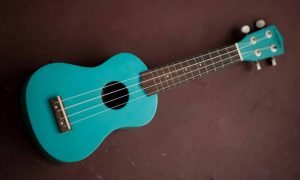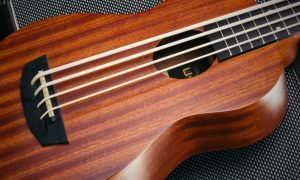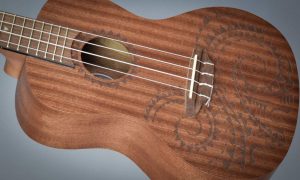Confused about ukulele string notes, names, and numbers?
This article will answer two simple questions:
- What are the ukulele string notes and names?
- What are the ukulele string numbers and order of the strings?
Ukulele String Notes & Names
The standard string notes for soprano, concert, and tenor ukuleles are G-C-E-A.
A few pointers that might be helpful when working with ukulele string names:
- When you’re holding your uke like you’re playing it, the G string will be the one closest to the ceiling. The A string will be the one closest to the floor
- The diagram above shows standard high-G (reentrant) tuning. The notes will be the same for low-G tuning, but the G string will be lower in pitch than the C string
- The fattest string is the C-string unless you are using low-G tuning
- For left-handed players, the order of the string notes is reversed
- Baritone ukuleles have a different tuning, which is D-G-B-E

Ukulele String Numbers & Order
The strings on a ukulele are numbered 4-3-2-1.
- If you’re holding the ukulele like you’re playing it, string 4 is closest to the ceiling, and string 1 is closest to the floor
- The string order of 4-3-2-1 corresponds to the string notes G-C-E-A
Why use ukulele string numbers instead of note names?
There are a couple of reasons I can think of for using string numbers instead of notes when referring to ukulele strings.
However, I don’t think there are hard and fast rules about when to use string note names and when to use string numbers. It will often depend on the situation and the player, so it’s a good idea to get comfortable with both methods.
String notes change when playing chords
While playing chords, the notes of the strings change. This can lead to confusion when trying to refer to individual strings using note names.
Imagine you’re in a lesson and are playing a basic B minor chord:If your instructor said your B note was buzzing, what exactly do they mean? This voicing of the B minor chord can have two B notes, so it’s not clear which B your instructor means in this context.
Using string numbers helps eliminates this kind of confusion. It’s also easier to call out a string number instead of trying to figure out the note being played on a given string.

Alternate tunings
Some people use alternate tunings for their ukulele, which obviously makes standard string names less useful.
For example, some players like to tune soprano ukes to A-D-F♯-B ( a whole step higher than standard tuning) for a more traditional Hawaiian sound. In this scenario, using ukulele string numbers clearly makes more sense.
You Might Also Like...
-
Ukulele Won’t Stay in Tune?
If you have a new ukulele (or new strings) you may notice that your uke won't stay in tune. Luckily, you can fix by yourself in less than a minute!
-
The Best Ukulele Accessories
A short overview of the best uke accessories for beginners and intermediate uke players.
-
Ukulele or Guitar: Which is Easier to Learn?
Which is easier to play, ukulele or guitar? In this short article, I'll take a look at which instrument is easier to learn and play for beginners.
-
Ukulele Vs. Guitar: What's The Difference?
The ukulele and guitar have a number of big differences, but they have more in common than you might think. Take a closer look at the ukulele vs. guitar.
-
Buying Your First Ukulele: 3 Mistakes to Avoid
A quick list of three common mistakes I see many people make when shopping for their first ukulele.
-
How to Buy A Ukulele: The 2024 Ukulele Buying Guide
You've decided to buy a ukulele, now what? My ukulele buying guide will help you choose a ukulele that meets your needs and budget.

